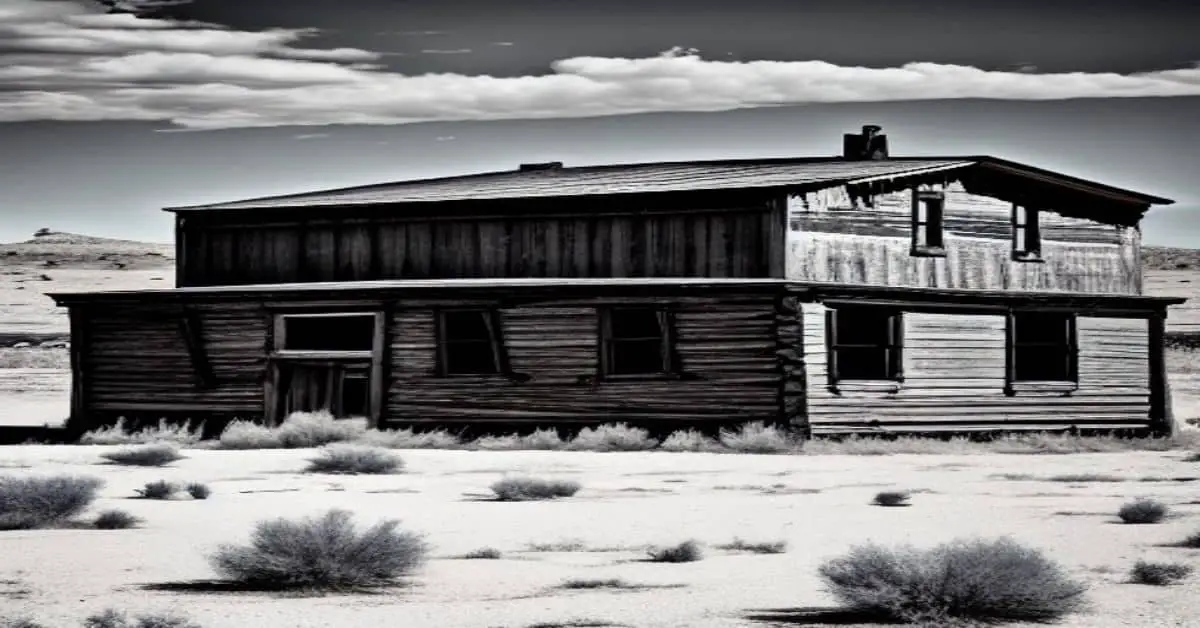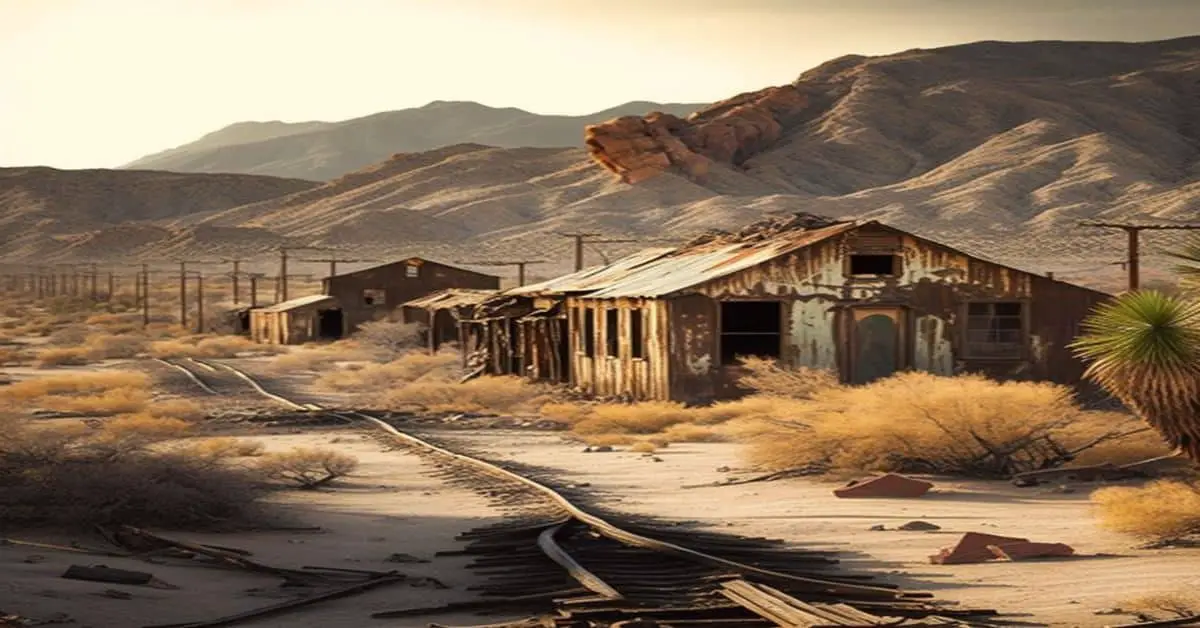There is something inexplicably captivating about ghost towns, as if they are living allegories of a bygone era. Oatman, nestled in the heart of Mohave County in Arizona, is one such town that has managed to survive the test of time.
The town takes its name from Olive Oatman, a white girl who was captured and subsequently released by the Mohave Indians. Oatman’s population grew from a few hundred to over 3500 within a year due to mining strikes, including a $14 million strike in 1915. Despite experiencing a decline in population after being bypassed by the new US 66, Oatman remains a fascinating destination for history buffs and tourists alike.
To discover Oatman is to discover a piece of Arizona’s rich history. Oatman’s origins are steeped in the Wild West, where mining and economic booms defined the landscape. The town’s story is one of grit and determination, of people who persevered through the harsh conditions of the desert to build a thriving community.
Today, Oatman stands as a testament to the perseverance of the human spirit, and it is a town that continues to defy the odds and captivate visitors from all over the world. In this article, we will delve into the history of Oatman, explore the economic booms that defined its growth, and examine the present-day town and its status as a ghost town.
Key Takeaways
- Oatman is a ghost town located in Mohave County, Arizona, named after Olive Oatman, a white girl who was captured and later released by the Mohave Indians.
- The town survived and flourished due to mining strikes, with the population growing from a few hundred to over 3500 within a year, and experienced a fire in 1921 but was rebuilt.
- Oatman became a last stop for travelers during the depression period, but the population decreased to 60 in 1950 when it was passed by the new US 66.
- Today, approximately 500 people live in Oatman and sell souvenirs to tourists, and the town is known for its wild burros that are descendants of domestic work animals and are protected by federal law.
History and Origins
The history and origins of Oatman, Arizona, are rooted in the town’s early mining strikes. The discovery of gold in the area led to a population growth from a few hundred to over 3500 within a year, thanks to a $14 million strike in 1915. The Tom Reed goldmine discovery in 1908 also caused another boom in the town.
The town was named after Olive Oatman, a white girl who was captured and later released by the Mohave Indians. Her Mohave son, John Oatman, changed the town name from Vivian to Oatman in honor of his mother.
The burros in Oatman today are descendants of domestic work animals and are wild. They were first brought to Oatman by early day prospectors and were used for hauling rock and ore in the mines. As the mines closed and people moved away, the burros were released into the surrounding hills.
Visitors should keep a safe distance from the burros to avoid being bitten or kicked. These burros are protected by federal law from capture, injury, or harassment.
Mining and Economic Booms
Mining played a significant role in the economic booms experienced by the town of Oatman, with the discovery of several gold mines leading to a population explosion and the establishment of a thriving mining community in the early 20th century.
The gold rush in Oatman began in 1902 when Ben Tad-dock struck gold and sold it to the Vivian Mining Company the following year. This discovery led to establishing a miner community in Vivian, later renamed Oatman in honor of Olive Oatman, a white girl captured and later released by the Mohave Indians.
The industrialization of the mining industry in Oatman led to the opening of several mines, including the Tom Reed goldmine in 1908 and the United Eastern Mine in 1913. The latter caused the population to explode to 10,000 people, making Oatman one of the largest gold mining towns in the country.
However, the mining industry in Oatman was sporadic over the next forty years, with the Tom Reed mine closing in 1942 after producing $13 million in gold.
Despite this, Oatman remains an important part of Arizona’s mining history and attracts tourists interested in its rich gold mining past.
Present-day Oatman
Today, visitors to Oatman can experience a glimpse of the town’s past through its preserved original buildings and the presence of wild burros on its streets, evoking a sense of nostalgia for the Old West.
The burros, descendants of domestic work animals, roam freely throughout the town and have become one of Oatman’s most popular tourist attractions. Visitors can feed and interact with the burros, but are advised to keep a safe distance to avoid being bitten or kicked.
In addition to the burros, Oatman offers a variety of other tourist attractions. The town is home to several unique shops, restaurants, and daily gunfight reenactments in the streets.
Visitors can also tour the historic Oatman Hotel, where Clark Gable and Carole Lombard honeymooned in 1939.
With its rich history and quirky charm, Oatman is a must-visit destination for anyone looking to experience a piece of the Old West.
“Nestled in Arizona’s rugged and remote wilderness, this tiny town’s rich Wild West history comes to life with staged shootouts, wooden sidewalks and a bounty of burros that roam freely. At first glance, the wild burros of Oatman seem to steal the show but dig a bit deeper and you’ll discover the town’s raucous mining history and a vibrant main street that plays host to various events throughout the year.”
https://www.visitarizona.com/places/cities/oatman/
Frequently Asked Questions
What was life like for Olive Oatman after her release from the Mohave Indians?
After her release from the Mohave Indians, Olive Oatman struggled to assimilate back into white society due to her cultural assimilation with the Mohave. She became a well-known public speaker, discussing her experiences and advocating for Native American rights.
How did the burros become a part of Oatman’s history and why does federal law protect them?
Prospectors introduced burros to Oatman and used them for mining. As the mines closed and people left, the burros were released into the hills and became wild. Due to their historical significance in Oatman’s burro history, they are protected by federal law to prevent capture, injury, or harassment.
What is the significance of the Tom Reed goldmine and the United Eastern Mine in Oatman’s history?
The Tom Reed Goldmine and United Eastern Mine significantly impacted Oatman’s history, contributing to the town’s economic development during the gold rush. These mines played a role in the evolution of mining techniques and technological advances, while also affecting labor and working conditions and the environment.
What other industries or businesses besides mining played a role in Oatman’s economy?
Oatman’s economy, besides mining, was influenced by ranching and later, tourism. The town became a last stop for travelers, and today, approximately 500 people sell souvenirs to tourists. Burros are also a popular attraction.
Are there any ghost stories or paranormal activities associated with Oatman’s history?
There are rumors of paranormal experiences in Oatman, including sightings of apparitions and strange noises. Some claim certain locations, such as the Oatman Hotel and the cemetery, are haunted. However, there is no concrete evidence supporting these claims.


